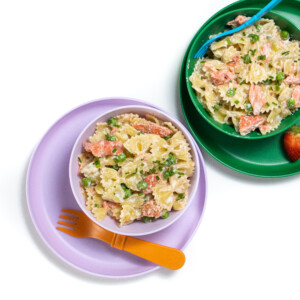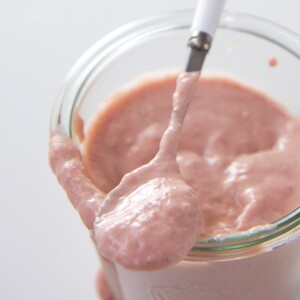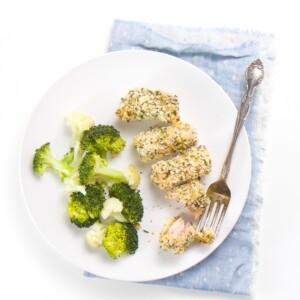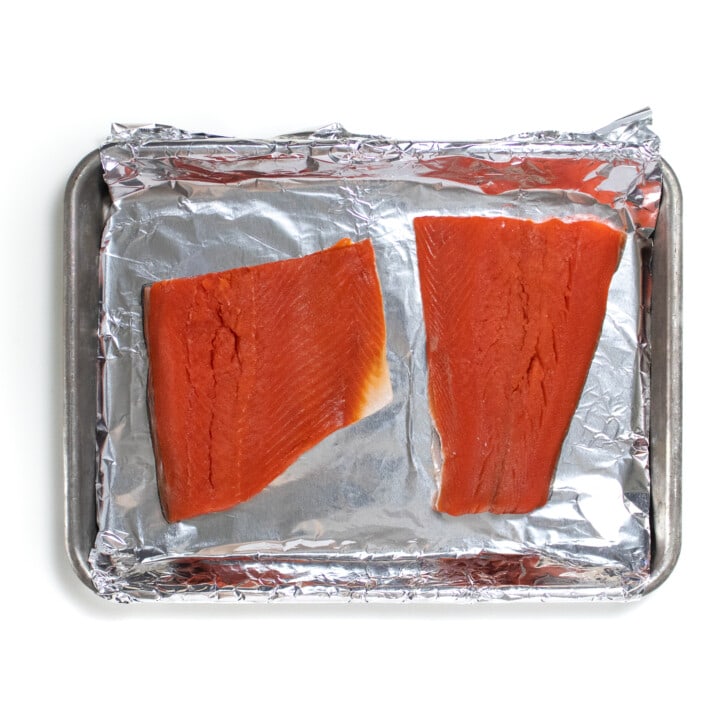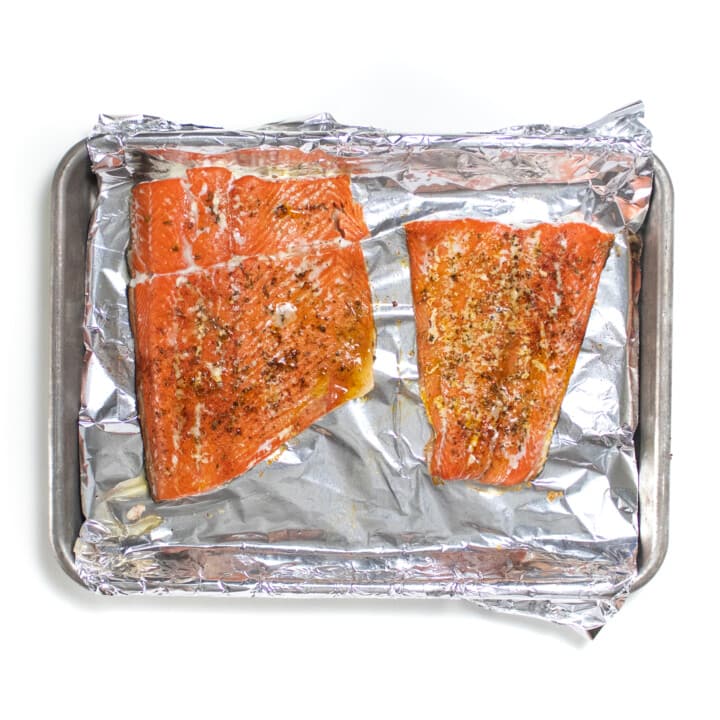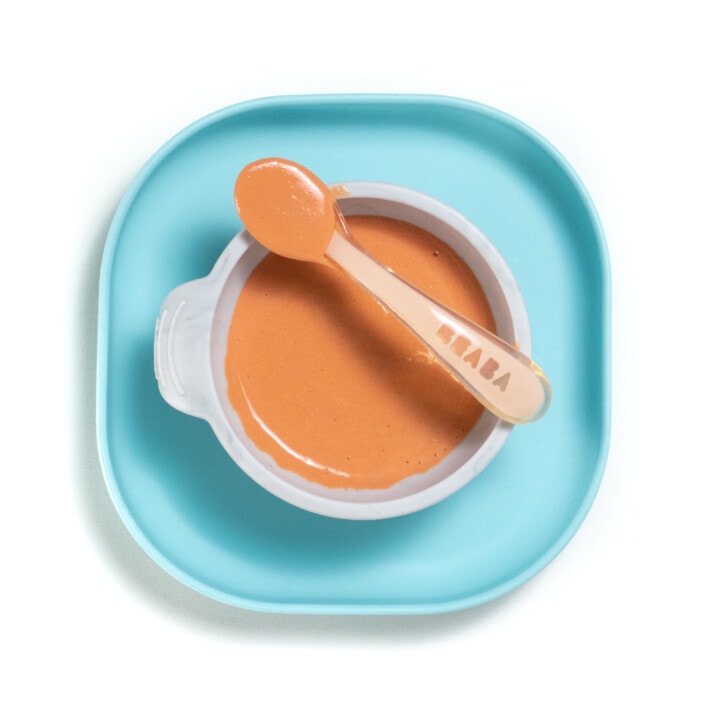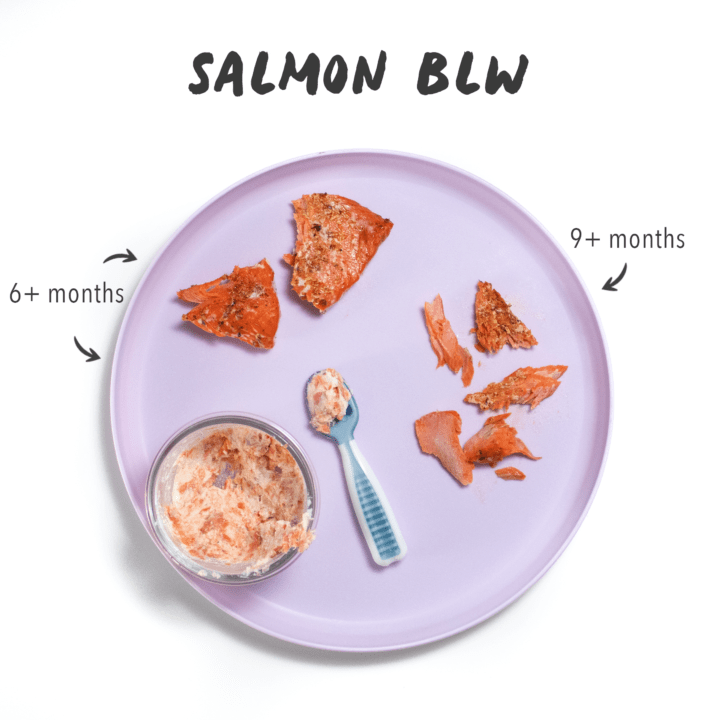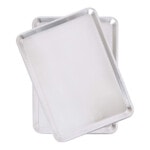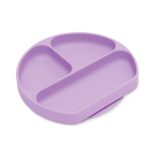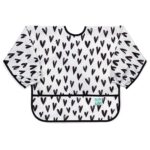How to Serve Salmon to Baby
Salmon is a great first food for babies! Salmon can easily be made into a smooth baby food puree, flaked for a finger food, or served in bigger pieces for baby-led weaning. In this guide, you will find information on the benefits of salmon, when your baby can eat salmon, recipes, feeding tips, and so much more! Perfect for babies 6 months and up!
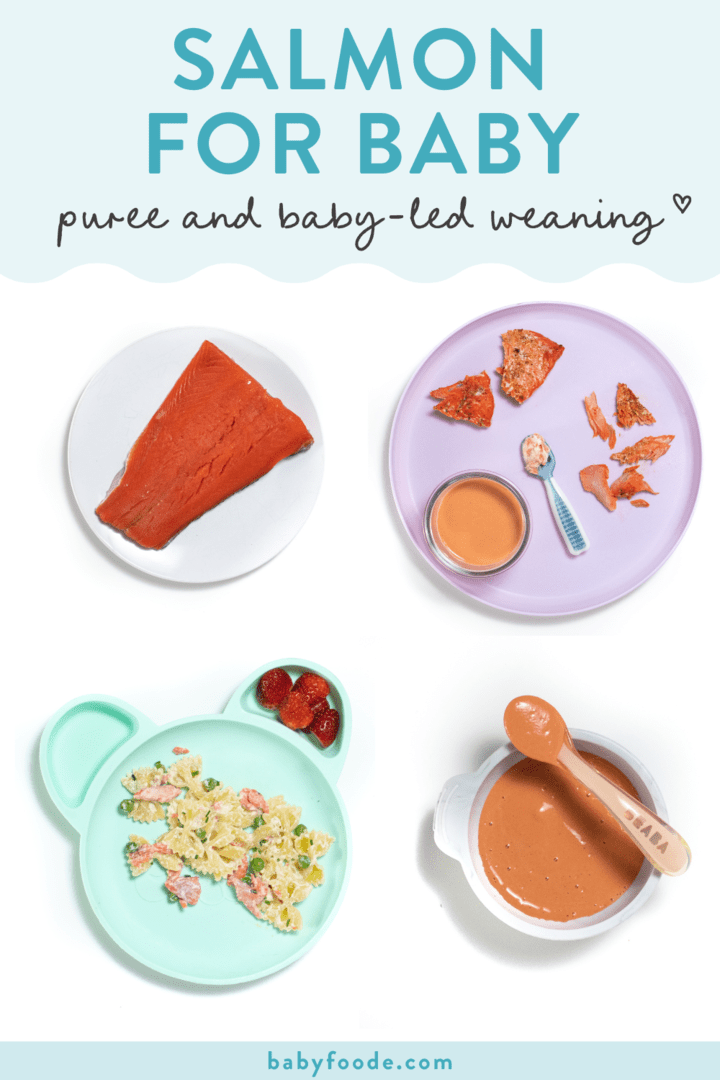
Medically reviewed and co-written by Jamie Johnson, Registered Dietitian Nutritionist (RDN), and Lauren Braaten, Pediatric Occupational Therapist (OT).
Salmon Baby Food
You might not think of salmon as a first food for your baby – after all, salmon is a kind of fish, and doesn’t fish taste, well…kind of fishy?
But if you haven’t been a big salmon eater up until this point, you should know that salmon does not have a fishy taste. In fact, salmon has a more savory, rich flavor, and is often described as buttery, thanks to its high-fat content. This, combined with salmon’s soft, flaky texture makes it a great choice for beginning eaters to manage.
This guide will give you 5 easy ways to incorporate salmon into your baby’s diet – served as baby food purees, made into herby salmon bites, flaked and stirred into pasta with veggies, or simply roasted and served in soft strips. Salmon is a perfect choice for your baby whether you are doing purees or baby-led weaning. These recipes are great for babies 6 months – 2 years of age!
Salmon for Baby Video
Watch this video to see how to prepare salmon for your baby!
First time making homemade baby food? Then, I would suggest that you start by reading my very in-depth Guide on how to Make Homemade Baby Food – which goes over all the important information such as the best cooking tools to have on hand, safe storage, how to know when baby is ready for solids, how to introduce purees, the best first foods for baby, and more! If you are doing Baby-Led Weaning, then be sure to check out my Complete Guide to Baby-Led Weaning – which covers what exactly is baby-led weaning, to every parent’s concern of baby-led weaning and choking, this guide goes over it all. I will also share how to know when baby is ready for BLW, the top 10 best first foods, a helpful sample blw feeding schedule, helpful tools to have on hand, and much much more!
Want more information? Then make sure to check out my best-selling cookbook Little Foodies: Recipes for Babies and Toddlers with Taste.

Reasons to Love Salmon for Baby
- delicious baby food purees – 6+ months
- great for baby-led weaning – 6+ months
- also great for the finger food stage – 9+ months
- full of essential nutrients for baby
- different ways for baby to eat – spoon-fed or self-feed
- easy to make
Benefits of Salmon for Baby
Let me count the ways. There are so many!!
- One of the best sources of DHA, a type of Omega 3 fatty acid needed for your baby’s cognitive development.
- One of the few excellent food sources of vitamin D, which is needed for healthy bone development.
- Canned salmon is a good source of calcium, also needed for bone development.
- Salmon is a low-mercury fish, which makes it a preferred choice over tuna.
- Excellent source of vitamin B12, needed for brain development and producing red blood cells.
- Contains many other nutrients, including zinc, selenium, potassium, and protein, which are necessary for your baby’s growth and development.
How to Select Salmon
Wild Salmon vs. Farmed
Wild, Alaskan salmon is preferred to farm-raised salmon from the Atlantic ocean. Wild salmon is more nutritious because farm-raised salmon is fed a nutrient-poor diet that usually contains antibiotics and pesticides. When choosing salmon filets, you want to make sure they are moist, firm, have a vibrant color and smell like the ocean. Make sure they don’t have any brown spots and the skin isn’t curling up.
Fresh Salmon vs. Frozen
Frozen, wild-caught salmon often tastes just as good, or even better than some “fresh” salmon that was farm-raised or not frozen shortly after being caught. Again, when deciding between fresh versus frozen, look more at how the salmon was raised. To thaw frozen salmon, first, puncture any vacuum-sealed package it’s in (or remove the salmon from its sealed package and place it in a resealable ziploc baggie). Put the salmon in a bowl and thaw overnight in the fridge for several hours.
Canned Salmon
When buying canned salmon, which is a great option, look for BPA-free packaging and “no salt added” or “low sodium” varieties.
Frequently Asked Question
You can introduce salmon to your baby once your baby is ready to start solids, usually around 6 months. However, because fish is a common allergy, it is recommended to wait to introduce it to your baby once a few other well-tolerated foods have been introduced, especially if your baby is at high risk for food allergies.
Salmon itself is not considered a choking hazard, however be mindful of bones in salmon, that are a choking hazard. Check for bones before serving to baby and always supervise baby while eating.
Yes, since salmon is a type of fish, which is a top 8 food allergen, it is considered a common allergy. As with any food, start with a small portion and be aware of any signs that might be an allergic reaction after introducing it. You may want to talk with your pediatrician about how to safely introduce salmon if your baby has severe eczema or other food allergies.
Salmon is not known to cause constipation in babies. However, it likely will not help with it either since it does not have any fiber.

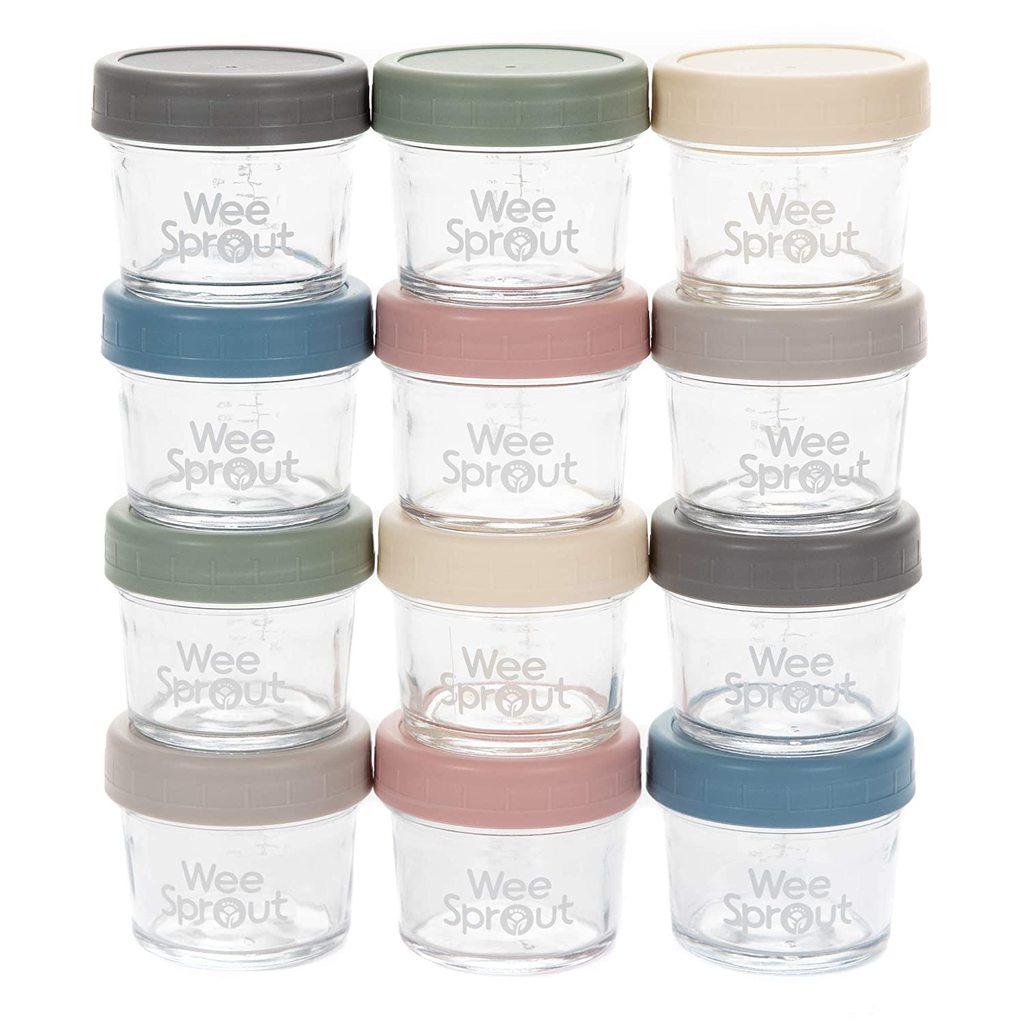

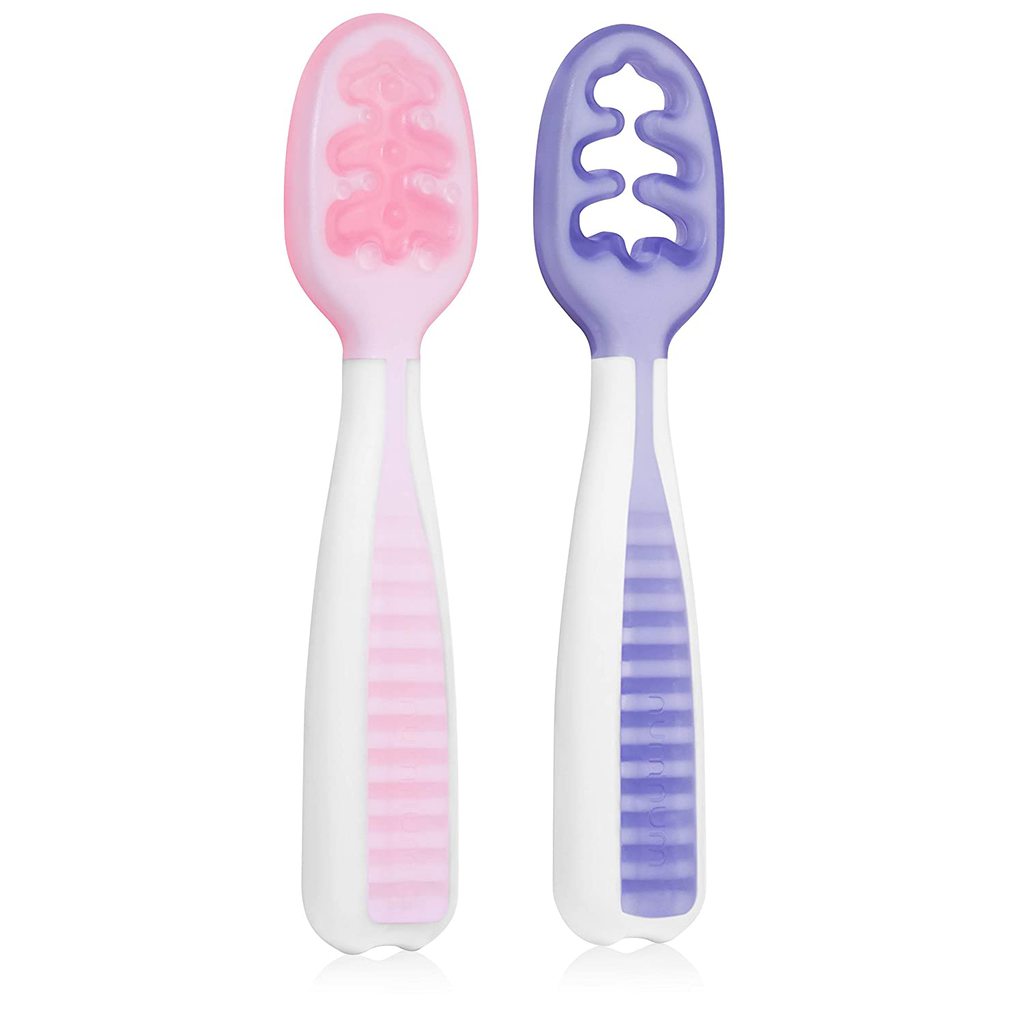
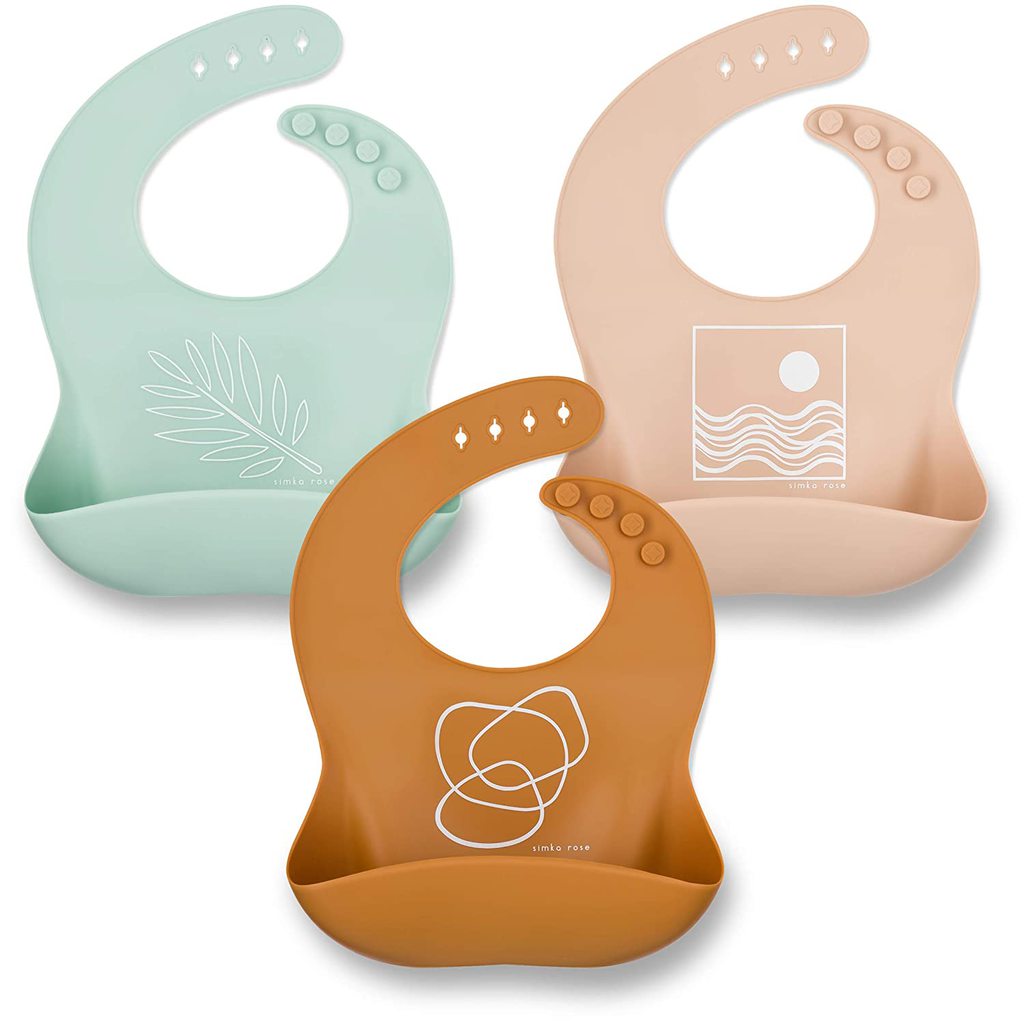
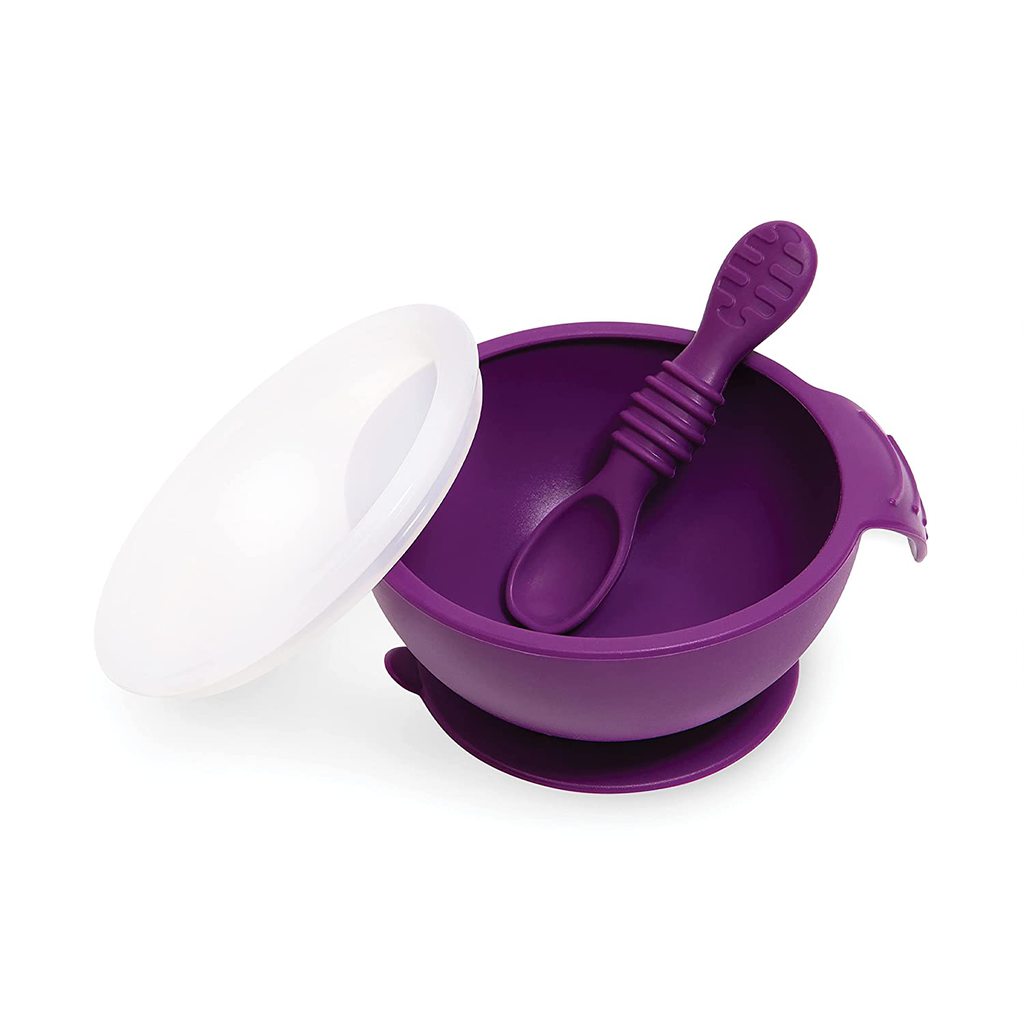
Tools Needed
These tools will make it a lot easier for you to serve melon to your baby. For more of my favorite kitchen tools, make sure to check out my online shop.
- blender or food processor
- storage containers for fridge
- highchair
- bib with catch pocket
- baby Bowls
- suction baby plates
- baby spoons
- freezer storage tray
- gootensil
- saucepan
- baking sheet


How to Cook Salmon for Baby Food
We love roasting salmon in the oven, as it gives you yummy, evenly cooked fish that doesn’t require the constant attention of pan searing. However, depending on the amount you’re cooking and the recipe, we’ll discuss more ways below.
- Prep: preheat oven to 425 degrees F. Line a baking sheet with parchment, foil or spray with cooking spray.
- Prep Salmon: place the salmon, skin side down, on the baking sheet and drizzle with olive oil and salt/pepper (optional).
- Cook: Place the baking sheet in the oven and cook for 8-10 minutes or until the flesh is opaque, the salmon easily flakes off with a fork or the internal temperature is 125-130 degrees. Let cool slightly.
- For a Puree: transfer the salmon to a blender or food processor and puree until smooth.
- Serve for Baby-Led Weaning: place cool florets onto your baby’s high chair tray or plate.
More Ways to Cook Salmon
Steam
- Place water in a pot, add a steamer basket, and bring to a boil.
- Add the salmon, cover, and reduce heat to medium.
- Cook for 5-6 minutes.
Poach
- Place salmon in a deep skillet skin side down.
- Add water or broth so that it just covers the fish. Bring to a boil.
- Once the liquid starts bubbling, turn off the heat.
- Cover the skillet and let it sit for about 10 minutes.
Sauté
- Pat each salmon fillet dry on the top and bottom using a paper towel or a clean kitchen towel.
- Heat a skillet over medium-high heat and let the pan heat up for a couple of minutes. Flick a few drops of water into the skillet to see if it’s hot enough. If the water sizzles and evaporates almost immediately, it’s ready.
- Add the oil and tilt the skillet so that a thin layer of oil coats the bottom.
- Place the salmon fillets skin side down in the skillet.
- Cook the salmon until the lighter-colored flesh has moved about 3/4 of the way up the fillets, about 8-9 minutes for thick fillets and 6-7 minutes for thinner fillets. Try not to poke or move the salmon; it’s important to just let it be.
- Flip the salmon and cook for an additional 2 minutes for thicker fillets and 1-2 minutes for thinner fillets.
- Remove the salmon from the skillet and let rest for about 3 minutes before serving.
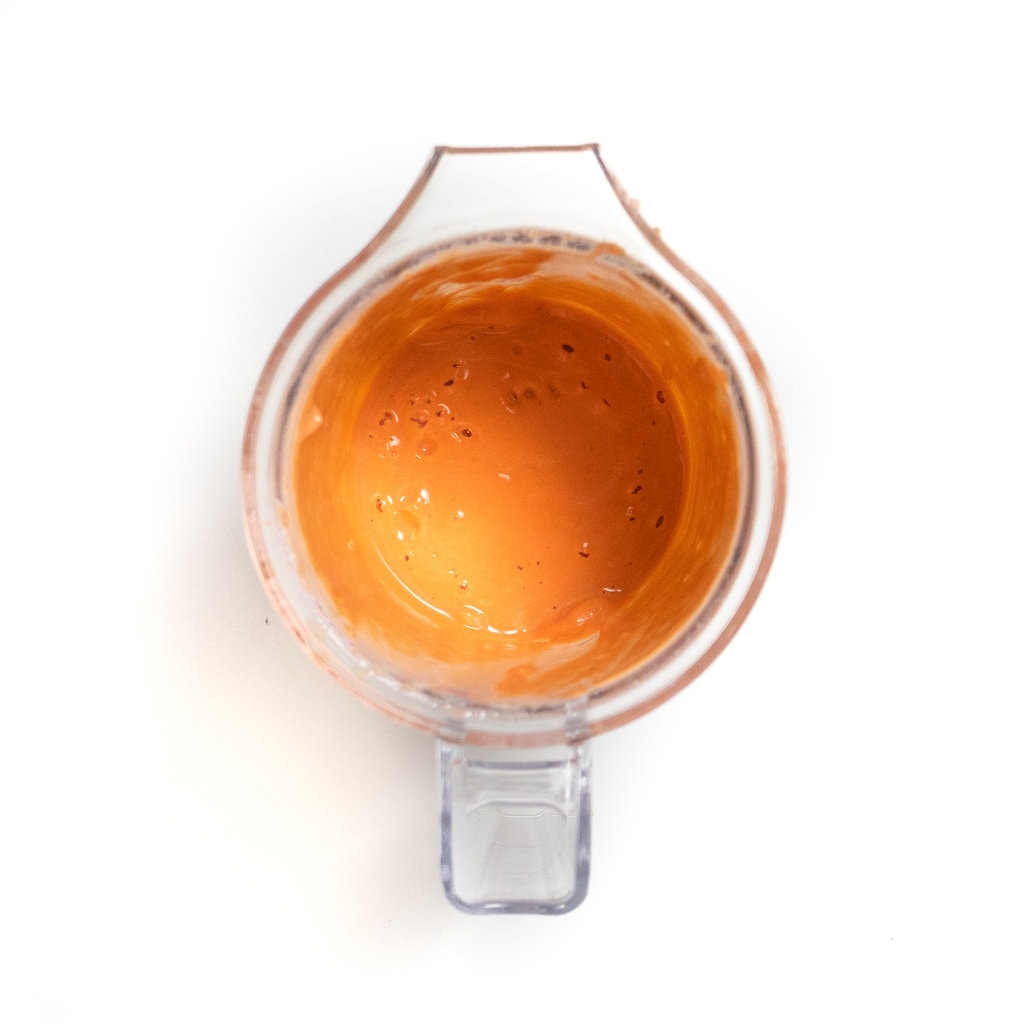

Salmon Baby Puree
Salmon can be made into a smooth baby puree and is great for your baby’s first bite. Though sometimes, babies may think the salmon puree has a tad too intense of flavor for their developing tastebuds. In that case, you can mix in a spoonful of two of the salmon puree into any other flavorful fruit or veggie puree your little one prefers.

Salmon for Baby-Led Weaning
Salmon is a great food for your baby to self-feed, whether for baby-led weaning, which happens around 6 months of age, or during the finger foods stage at 9 months.
Big Pieces – 6+ months: It’s best to start your baby with either a large piece of salmon, without the skin, that has been roasted, steamed, poached or sautéed until tender. You can also serve your baby a mash of salmon and ricotta on a self-feeding spoon.
Small Pieces of Flakes – 9+ months: when your baby’s pincer grasp has developed, you can serve thin flakes of salmon, without the skin, to your baby.
Storage Instructions
Salmon Baby Puree
Refrigerator
You can store it in an airtight container in the fridge for up to 4 days.
Freezer
This puree can be frozen for up to 4 months.
- Spoon puree into a freezer storage container – do not overfill.
- Place the lid on the storage container or cover it with a piece of saran wrap and label it with the date and recipe name.
- Place the tray into the freezer and let freeze completely – preferably overnight.
- Pop out the baby food cubes and place in a zip-lock baggie or stasher bag – don’t forget to re-label the baggie or stasher bag for future reference.
Need more information on how to store your baby foods – head over to my Best Baby Food Storage Containers – Plus 6 Tips on Freezing and Thawing post!
Baby-Led Weaning
You can store cooked salmon in an air-tight container in the fridge for up to 3 days.
Combination Purees
Feel free to mix these salmon baby food purees into another puree for an even tastier combination of goodness. Give these fun flavors a try!
Favorite Salmon Recipes for Baby
Salmon Pasta with Peas
Roasted Strawberry + Salmon Baby Food Puree
Crispy Herb Salmon Bites for Baby + Toddler
Salmon, Sweet Potato + Apricot Baby Food Puree
SALMON + ORANGE BABY FOOD PUREE
Tips for Feeding Salmon to Baby
- Make sure it is free from bones that could get stuck in your baby’s airway
- Always cook salmon all the way through and avoid raw fish that increases the risk of foodborne illness
- Avoid serving cured, smoked, dried or salted salmon, which will likely have too much sodium for baby
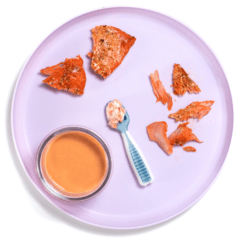
Get the recipe: Salmon Baby Food: Puree & Baby-Led Weaning
Ingredients
- 1-2 fillets of salmon, patted dry with a paper towel
- 1 tsp olive oil
- pinch seasoning of choice, paprika, garlic powder, dried oregano, chili powder, onion powder or dried thyme
Instructions
- Preheat oven to 425° F. Line a baking sheet with foil.
- Place the salmon on the baking sheet and drizzle with oil and rub in any seasoning (I used paprika and oregano).
- Place the baking sheet into the oven, and cook for 8-10 minutes or until it is opaque, easily flakes off with a fork, and reaches an internal temperature of 125-130° F. Let cool slightly.
- For a Baby Puree: remove the skin and place the salmon into a blender. starting on low and working your way up to high speed, puree the salmon until you reach your desired consistency, adding in a liquid (fresh breast milk, formula, water or no-sodium veggie broth) in 1/4 cup increments if needed. I had to add in just 1/4 cup of broth to get the consistency seen in this photo. Serve by itself or mix with your favorite fruit or veggie puree.
- For Baby-Led Weaning: flake off salmon age-appropriate chunks and serve to baby. You can also mash 2 tablespoons of salmon with 2 tablespoons of whole milk ricotta and serve to your baby on a self-feeding spoon.
Notes
Did you make this recipe?
Tag @babyfoode on Instagram and hashtag it #babyfoode!

